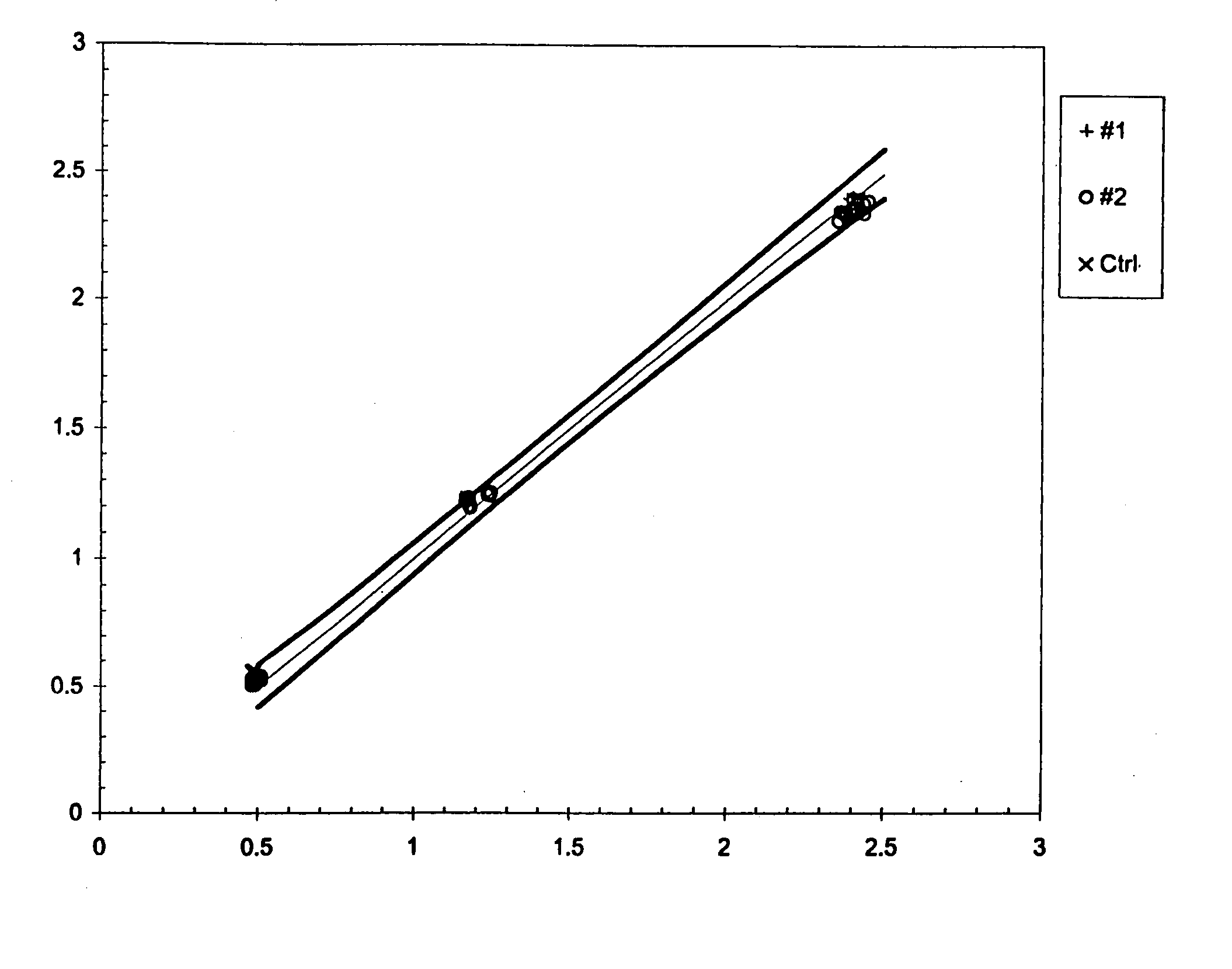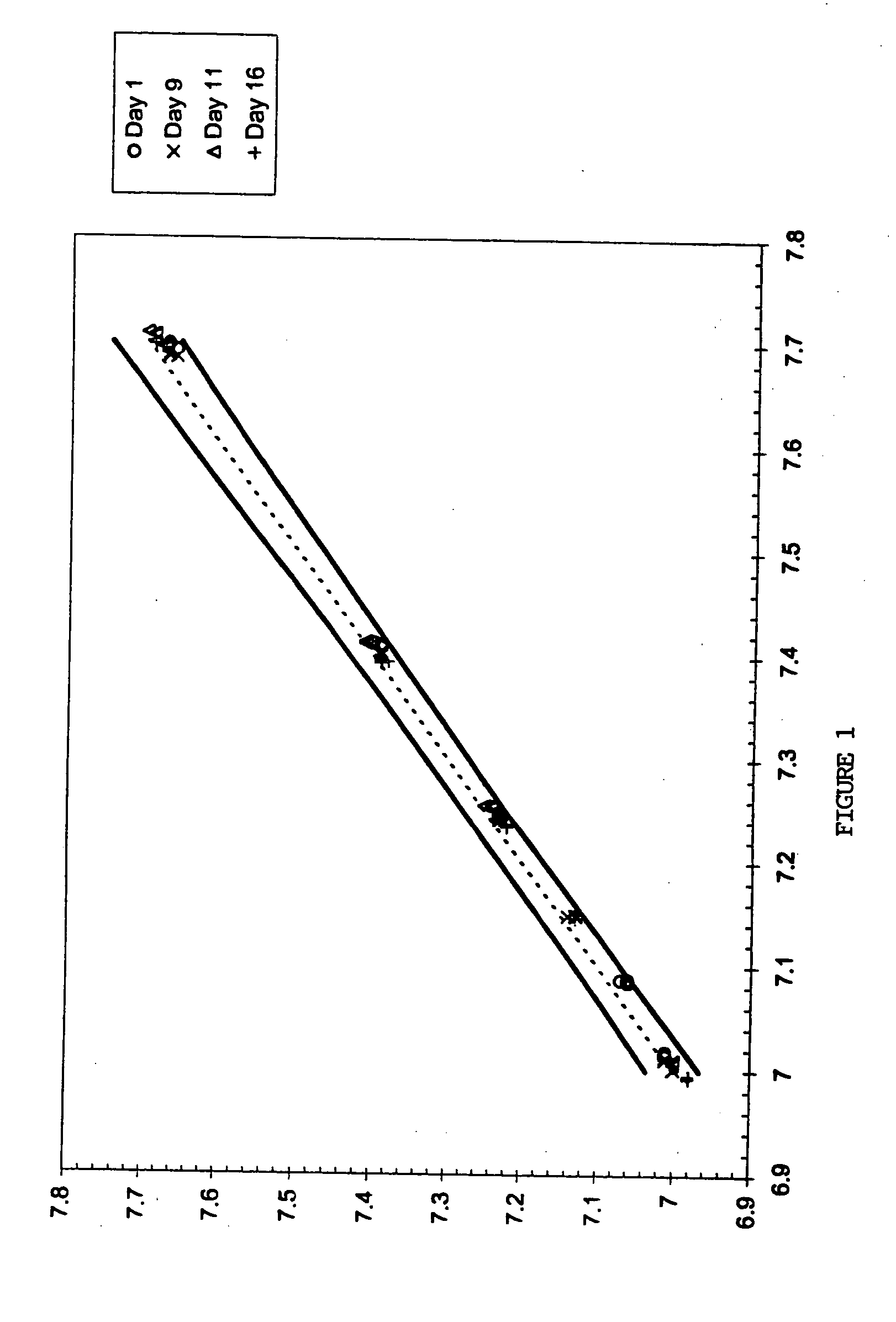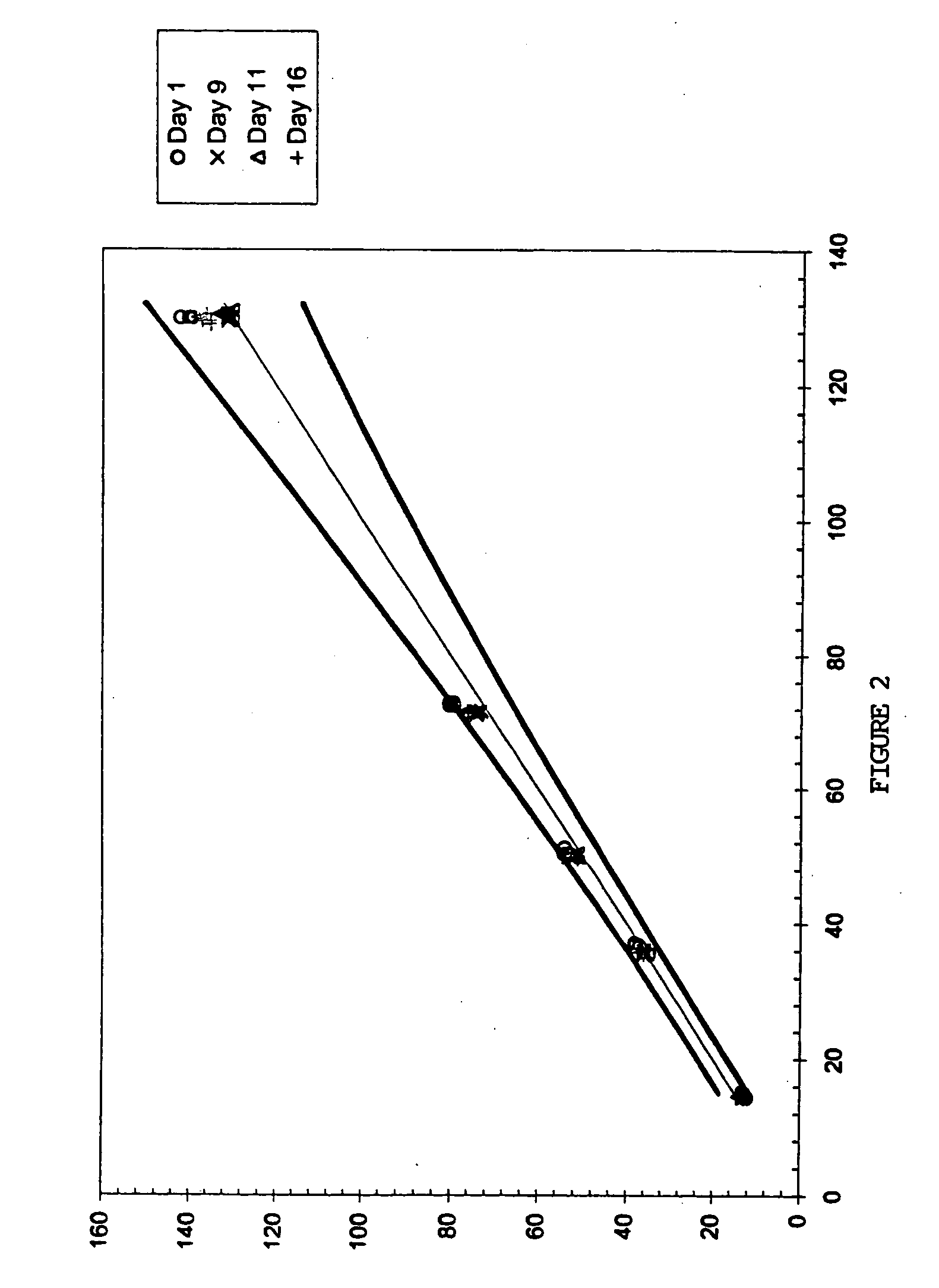Polymeric reference electrode
a reference electrode and polymer technology, applied in the direction of instruments, material electrochemical variables, measurement devices, etc., can solve the problems of inability to make electrochemical measurements, too large membrane impedance, etc., and achieve the effect of improving mechanical strength
- Summary
- Abstract
- Description
- Claims
- Application Information
AI Technical Summary
Benefits of technology
Problems solved by technology
Method used
Image
Examples
example 1
[0038] Preparation of the reference electrode. n-butylacrylate (nBA) and methyl methacrylate (MMA) were combined in an 80:20 molar ratio. Benzoin methyl ether (BME) was added to the solution to a final concentration of 0.5%, and the mixture was stirred rapidly until it was completely dissolved. The solution was then divided into glass scintillation vials with approximately 5 ml of the solution per vial. The vials were then placed under a high intensity UV lamp for about 1 hour until fully polymerized. The polymer was then dissolved in cyclohexanone with vigorous agitation to produce copolymer solution of an appropriate viscosity. The solution was optionally mixed with a solution of PVC before use for coating the submembranes.
[0039] The internal electrode was prepared by applying a 1-4 M solution of KCl in PVA to form a submembrane on an Ag / AgCl contact. The aqueous phase was then dried.
[0040] The reference electrode was assembled by coating the submembrane with two to three layers...
example 2
[0041] Testing of the polymeric reference electrode. Comparison to Calomel reference electrode. The polymeric reference electrode was compared to a commercially available Calomel reference electrode. The mV differential from the test calibration solution to various other test solutions obtained with the polymeric reference electrode was compared to data obtained with a Calomel reference electrode. The polymeric reference electrode of the instant invention was found to be comparably stable to the Calomel reference electrode based on repeated measurements of the series of test solutions.
example 3
[0042] Testing of the Polymeric Reference Electrode. Practical application of the reference electrode. Polymeric reference electrodes were used in conjunction with ion selective electrodes (ISEs) to measure the concentration of various analytes in whole blood and aqueous solutions. The sensors were exposed to extensive testing over several months. The results of the ISEs that were referenced off of the polymeric reference electrode tracked well with the control ISEs that were referenced off of the standard gel electrode. This was true for each of the ions tested; Na+, Ca++, K+ and H+ (pH). The polymeric reference electrode of the invention was found to produce stable, reproducible results over a range of concentrations of each of the ions within two standard deviations of the average value determined using a National Institute of Standards and Technology (NIST) traceable standard reference method.
PUM
 Login to View More
Login to View More Abstract
Description
Claims
Application Information
 Login to View More
Login to View More - R&D
- Intellectual Property
- Life Sciences
- Materials
- Tech Scout
- Unparalleled Data Quality
- Higher Quality Content
- 60% Fewer Hallucinations
Browse by: Latest US Patents, China's latest patents, Technical Efficacy Thesaurus, Application Domain, Technology Topic, Popular Technical Reports.
© 2025 PatSnap. All rights reserved.Legal|Privacy policy|Modern Slavery Act Transparency Statement|Sitemap|About US| Contact US: help@patsnap.com



